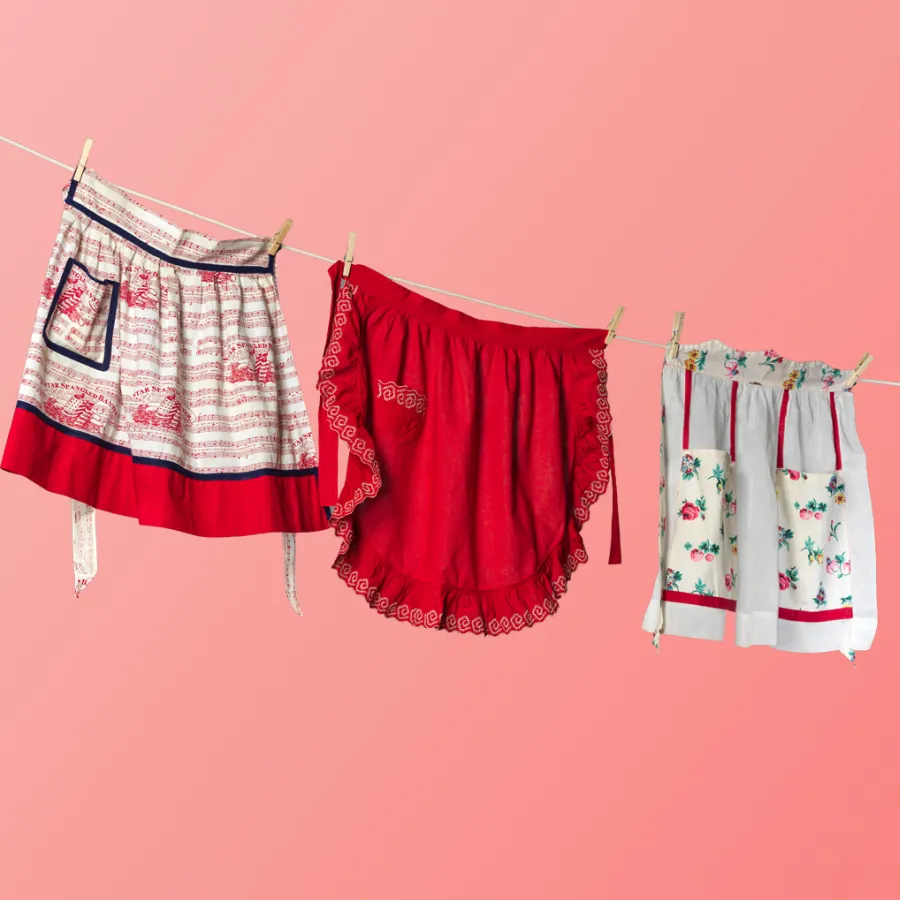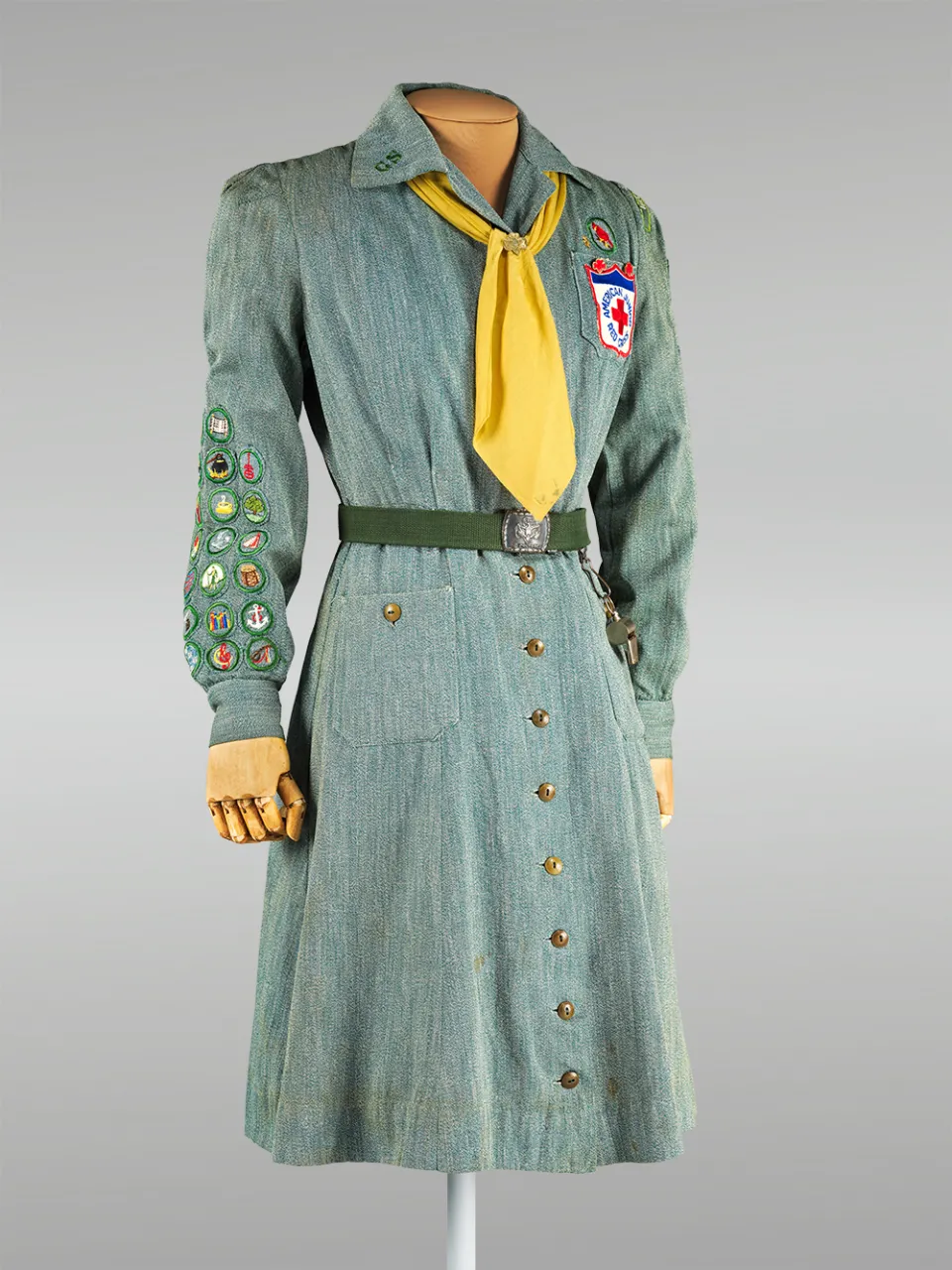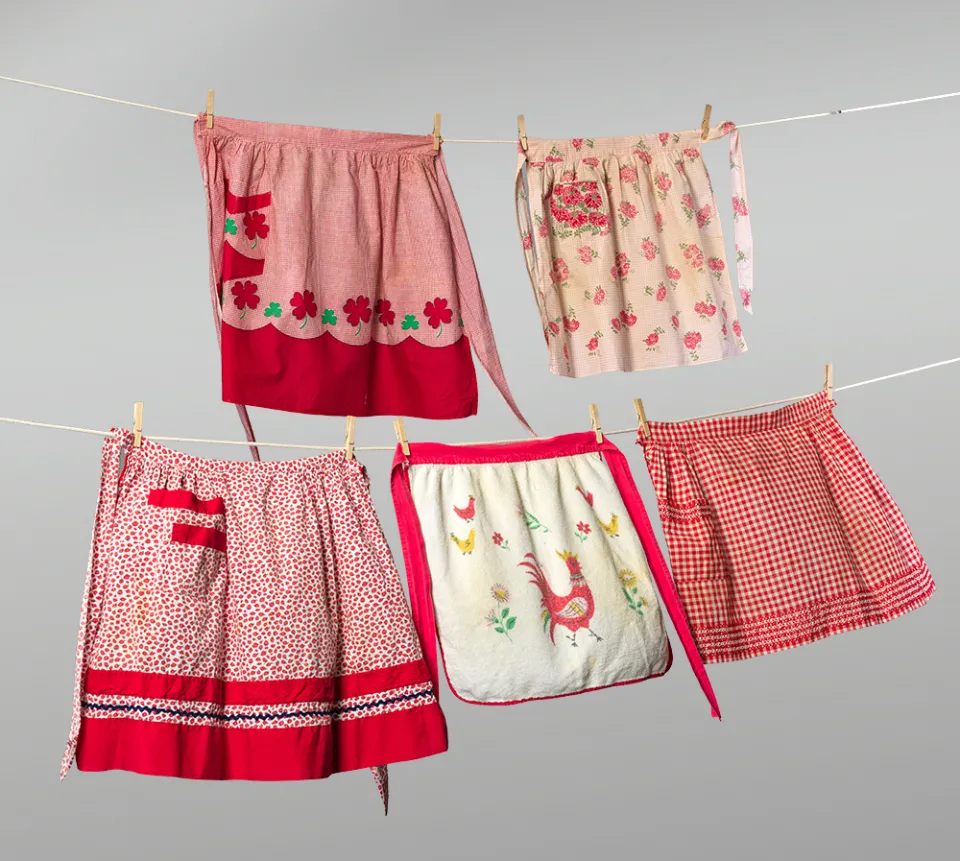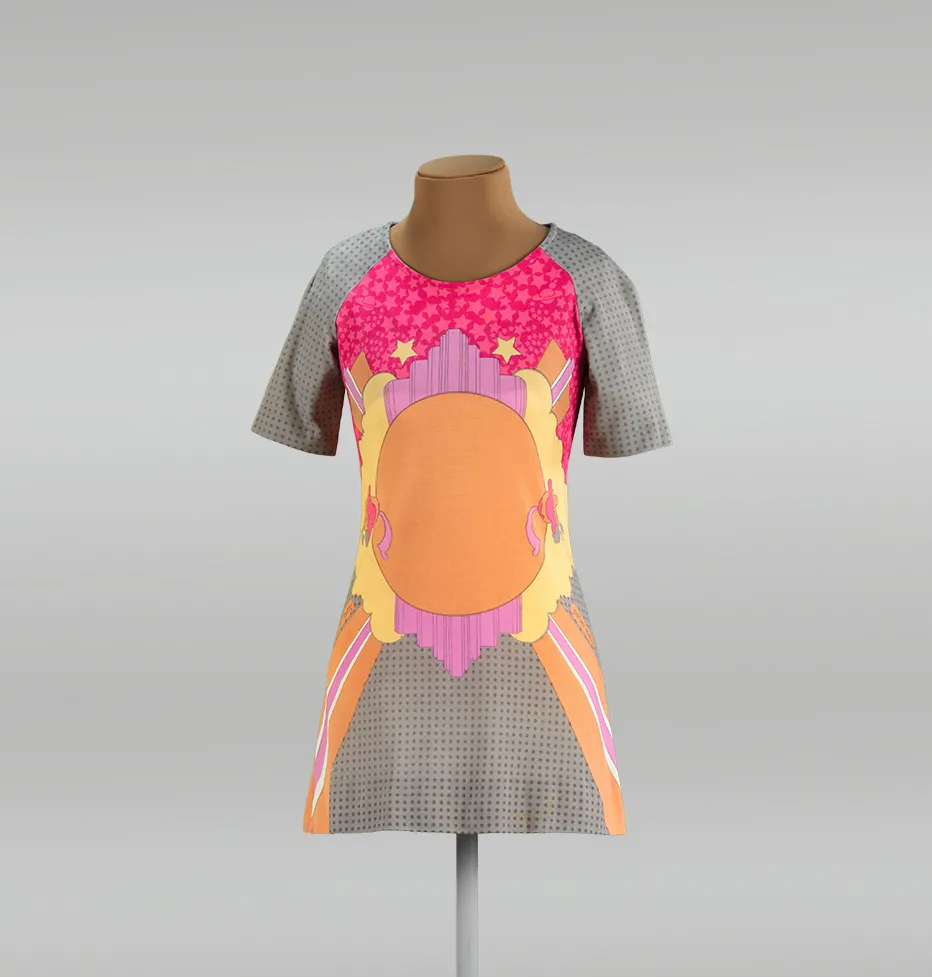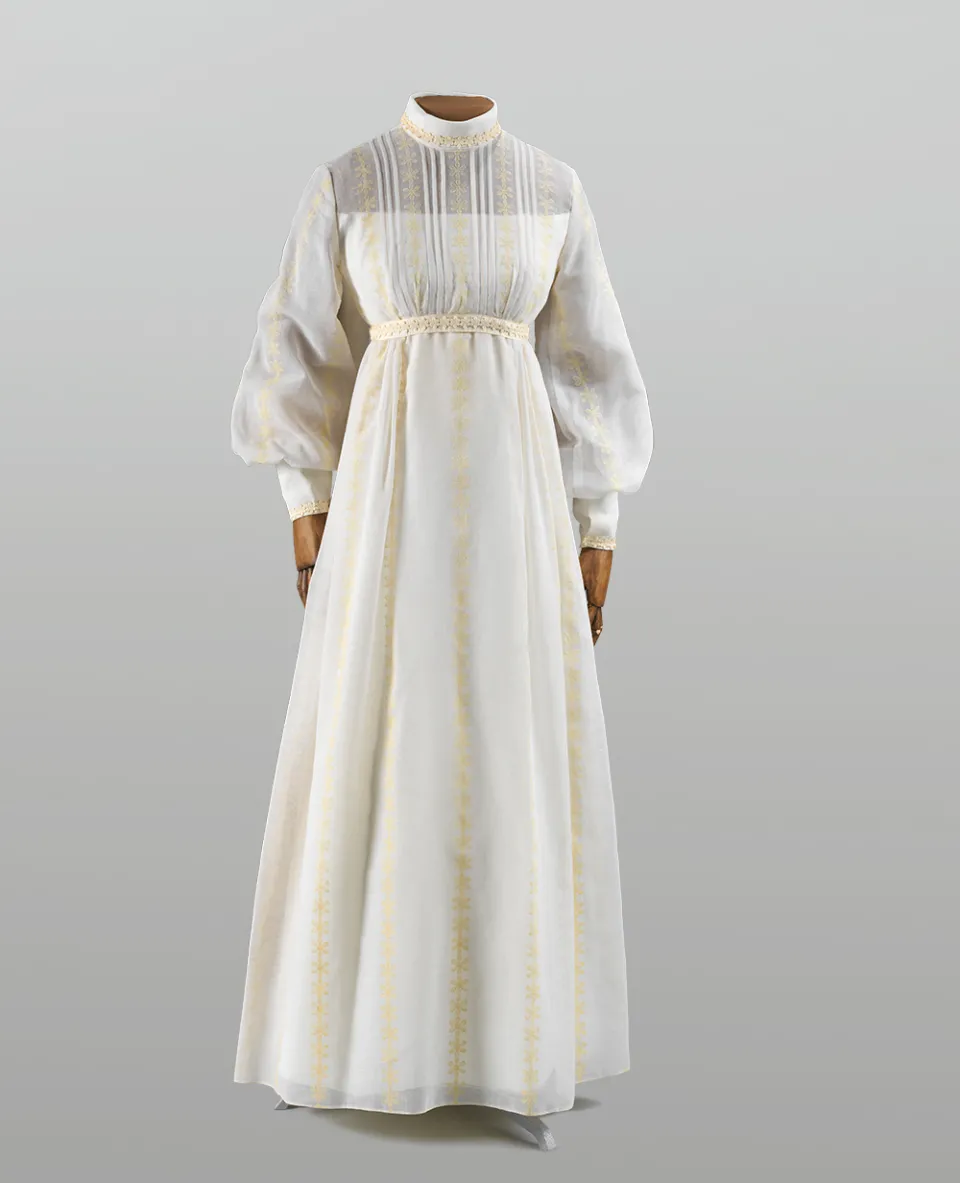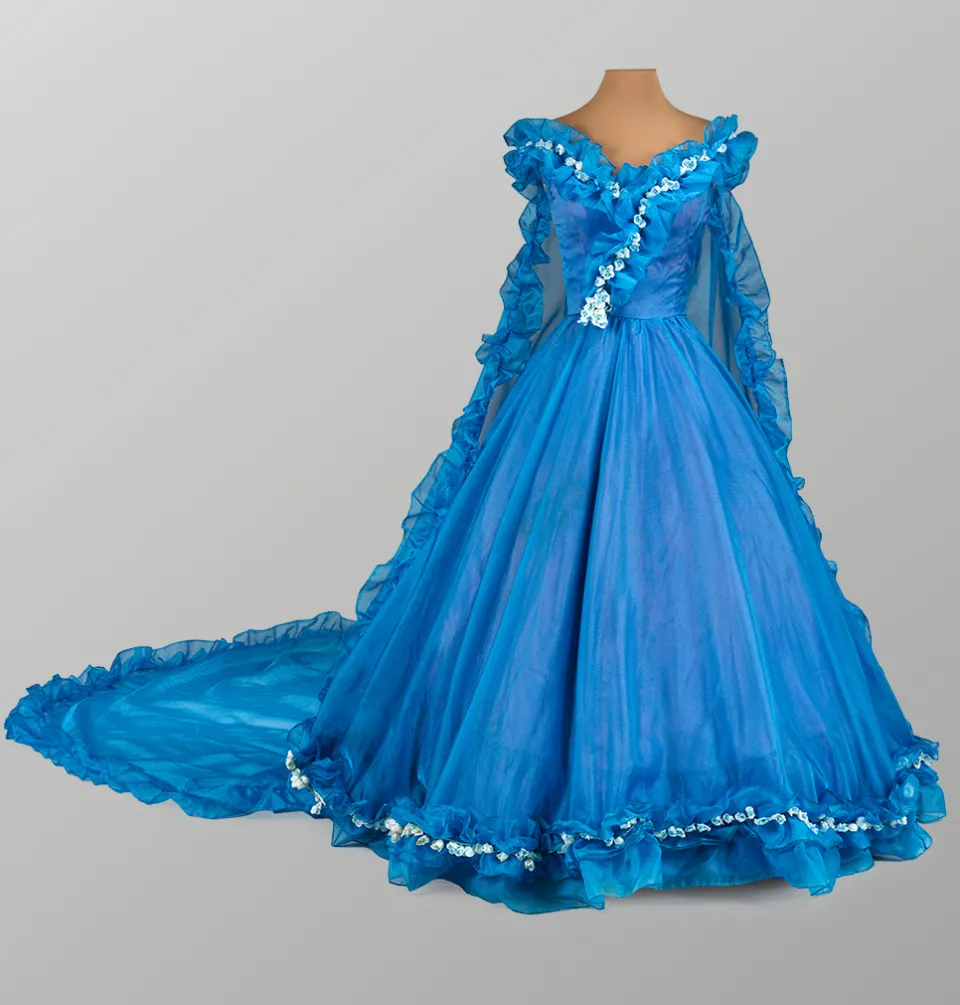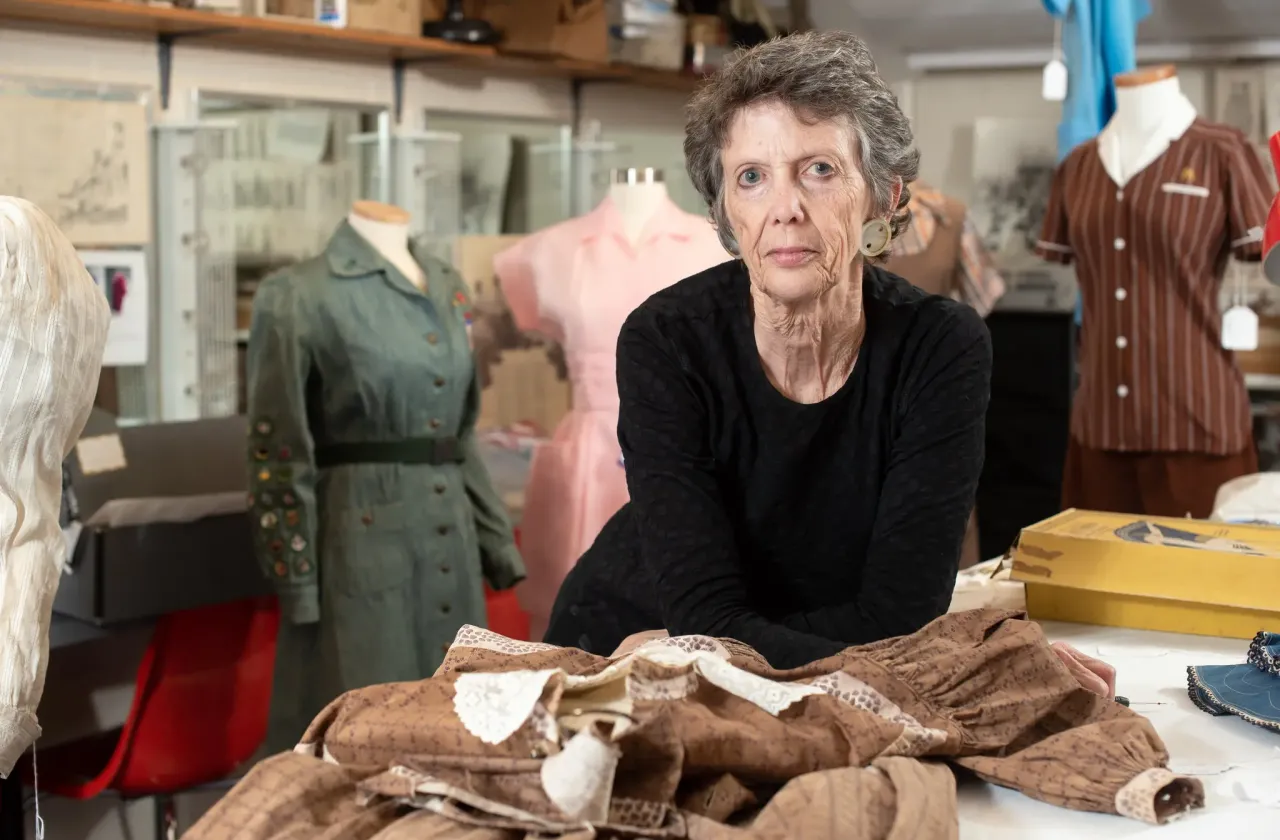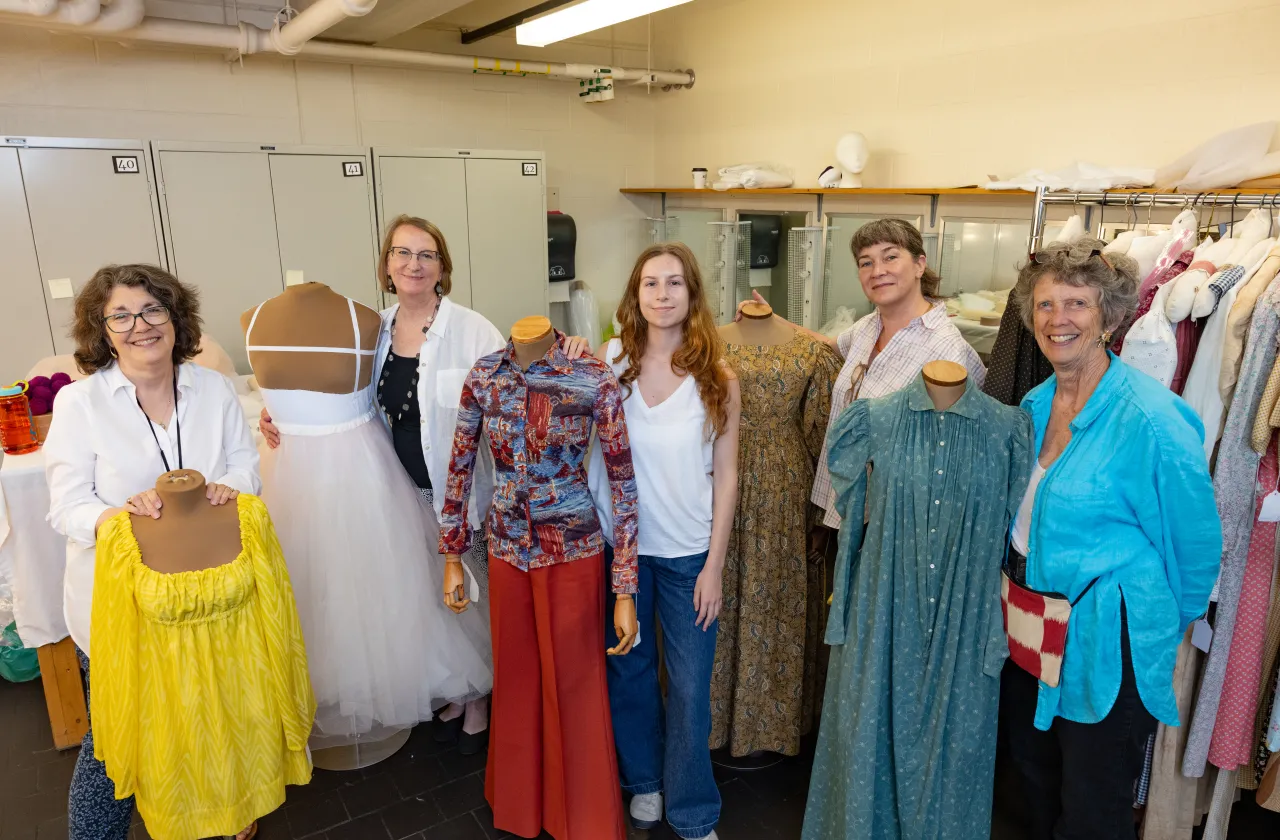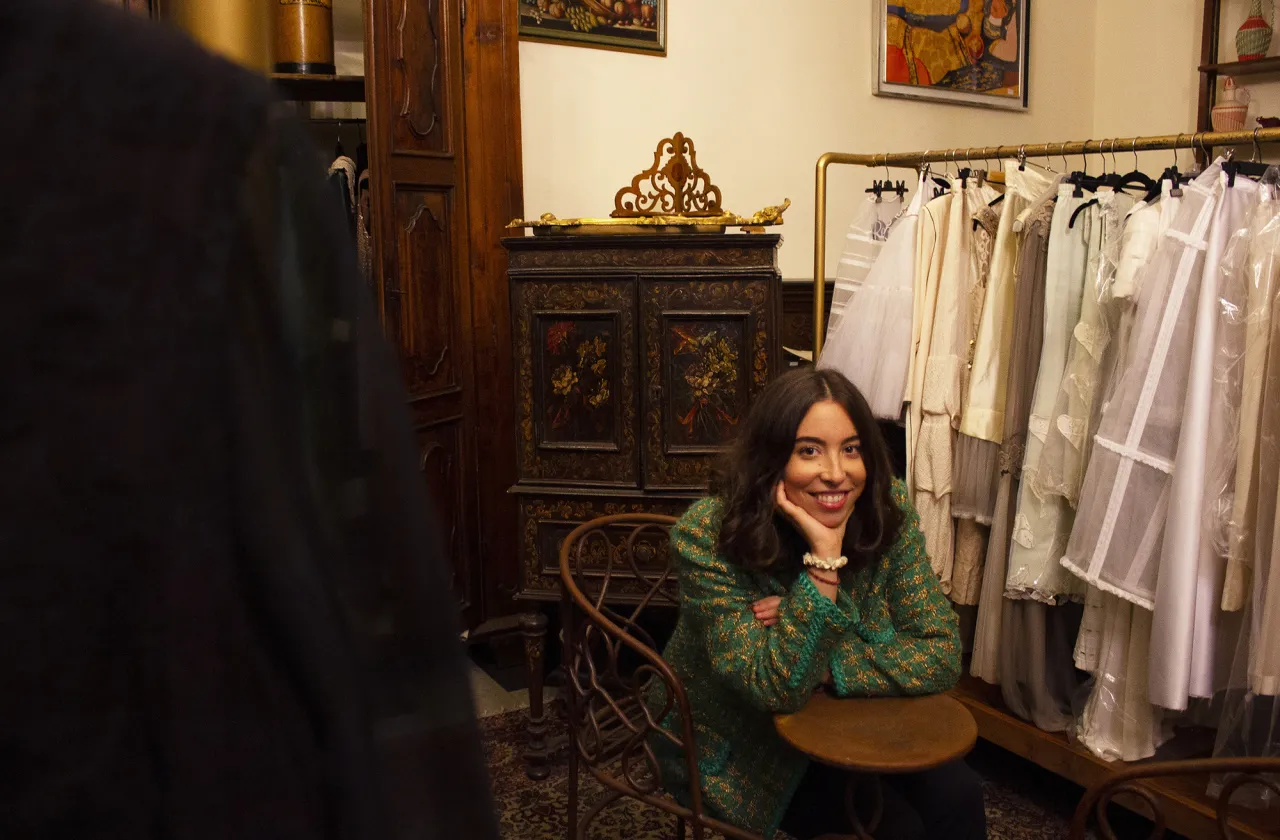Every Stitch a Story
Smith Quarterly
Garments from Smith’s vast collection of historical clothing give depth and dimension to women’s everyday lives
Photographed by Anna-Marie Kellen for the Smith College Historic Clothing Collection
Published February 10, 2025
On September 27, 2024, The New York Historical museum debuted an exhibition called Real Clothes, Real Lives: 200 Years of What Women Wore that will run through June 2025. At its heart are garments from Smith’s vast historical clothing collection, a timeline of sorts that brings to life two centuries’ worth of women’s everyday experiences—their work, their traditions, their aspirations—through clothing.
At an opening gala, designer Diane von Furstenberg and other notable guests mingled among 30 outfits displayed in glass cases, including a double-breasted wool suit from the 1920s, a short cotton top from the late 19th century, a homemade minidress from the 1960s, von Furstenberg’s own daisy-yellow wrap dress from the 1970s, and more. The garments were presented in their original states—with stains, tears, and all—to tell the deeper story of the rites of passage and vicissitudes of the lives of the women who wore them.
In writing about the exhibit for Vogue, fashion historian and editor Lilah Ramzi noted, “This is not a show celebrating the rare and exquisite remnants of sartorial history but the quotidian pieces of American women—a category of fashion often overlooked in fashion media and academia.”
The exhibition capped a banner year for the Smith College Historic Clothing Collection (SCHCC) that began with the publication of a critically acclaimed book also titled Real Clothes, Real Lives: 200 Years of What Women Wore (Rizzoli Electa) by Kiki Smith ’71, professor of theatre and founder/head of the collection. For her and the dedicated students and alums who have worked to grow the collection, the spotlight has been a long time coming.
What started 50 years ago as a project to preserve a few interesting items from the jumble of abandoned stage costumes in the theatre department has evolved into a unique archive of more than 4,000 garments—from housedresses and maternity clothes to waitress outfits and petticoats—that reveal the often untold stories behind the so-called social uniforms that convey the identities and roles of women over time.
Housed in the basement of Smith College’s Mendenhall Center for the Performing Arts, the collection has been devotedly added to, cataloged, curated, and cared for by Kiki Smith since 1974. “I just knew that some of the pieces that would be destroyed onstage would be much more valuable as a resource for research,” she says. “I put a bunch of gray metal cabinets in the hallway and just kept going through what we had.” Smith became increasingly adept at “reading” a garment—the number and types of alterations, the pattern of faded material, the mended tears, and the kinds of stains, all intimate details in the story of the life of the woman who wore it.
The collection has grown steadily over the years, as has the number of its supporters. Vanessa Friedman, fashion director and chief fashion critic for The New York Times, first brought the SCHCC national recognition in a 2019 Times feature story, writing that the collection’s clothes are “the kinds of garments generally overlooked or dismissed by museums and collectors of dress, who tend to focus on fashion as an expression of elitism, artistry, aspiration.” Friedman introduced Smith to von Furstenberg, and soon after Smith had a book deal for Real Clothes, Real Lives and the SCHCC’s first major exhibit was on the calendar.
Rebecca Shea ’99, who heads New York–based RCS Fine Art, a costume exhibition display and collection management firm, worked closely with Smith on both the book and the exhibition to make people aware of the significance of these documentary garments. “These are not the fantasy of couture garments but what women chose to wear to face the obstacles of their everyday lives,” Shea says. “They trace how women’s lives and roles have evolved over 200 years.”
Smith students are introduced to the SCHCC through costume design classes, theatre production work, internships, and independent research. Besides studying design, textiles, and the clothing’s historical significance, students have repaired garments, cataloged the ever-increasing number of pieces in the collection, and, in general, helped to maintain its organization.
“Kiki [Smith] will find a way to make sure that the collection survives, but I hope that there’s overwhelming support in the next couple of years to really make it fly and see where it can grow from here.”
“The value of working with a team is maybe my biggest takeaway from my time working with the collection,” says Jennifer Loveman Manthei ’90, director of operations and chief liaison for the advancement division at the Museum of Science in Boston. “You didn’t have to say, ‘I’m a theater person’ or ‘I’m a math person’ because we were all there for the collection; we just came from different perspectives.”
An anthropology and theatre major, Theresa Miles ’18 is a costume coordinator and designer whose credits include The Equalizer, Feud: Capote vs. The Swans, and Eileen. As a student, she used costume design as a bridge between her two majors to learn about culture and design. “Study collections like the historic dress collection are quite rare,” Miles says. “You opened these little gray doors and you were like, ‘Wow, we’re back in the 1890s.’”
As the collection blossomed, Smith realized its significance as a multidisciplinary teaching tool. For example, Jonathan Gosnell, professor of French studies, uses the collection in Consumer Culture and the French Department Store, an intermediate French culture course in which students read Au Bonheur des Dames by Émile Zola—a novel about the advent of the Parisian department store.
For Gosnell, the collection is instrumental in illustrating the far-reaching impact that French fashion and department stores had in the mid-1800s. “The department store was important in making French fashion more democratic,” he says. “French fashion was sold to the middle classes, who took the styles and trends into their communities and made them accessible to people in small towns like Northampton. It’s exciting to use the collection for students to see the connections among consumerism, culture, and fashion, and how women played an important role in developing these.”
Barbara Kellum, professor of art, teaches a first-year seminar each fall called On Display: Museums, Collections, and Exhibitions. While most of her coursework uses the Smith College Museum of Art collection, her students also become familiar with the SCHCC. “Students always come away just agog at what they’ve seen,” she says. “I really think it speaks to them in a way that no other collection on campus does. As soon as you put a garment on a mannequin, you get the full impact of how a skirt falls or what the constraints are of one garment or another. It really brings history alive for students—especially women’s history.”
With the collection garnering more and more national attention, there is hope among the collection’s supporters that it will also continue to gain more visibility on campus and perhaps even find a new, bigger permanent home. “Right now, it’s literally a hidden treasure in the Mendenhall basement, and they are running out of room,” Gosnell says. Regardless of what comes next, costume designer Theresa Miles is certain of one thing: “Kiki will find a way to make sure that the collection survives, but I hope that there’s overwhelming support in the next couple of years to really make it fly and see where it can grow from here,” she says.
The pieces highlighted here are featured in both the book and the exhibition at The New York Historical museum. The clothes represent a variety of fashion trends and uses and span several decades. Most were donated by the owners themselves or their families, who were eager to share the stories behind the garments with the Quarterly.
Cheryl Dellecese is a senior editor at Smith College.
Sylvia Plath’s 1940s Girl Scout Uniform
The vibrant green of this 1940s Girl Scout uniform worn by Sylvia Plath ’55 was made the official color of the Girl Scouts in the 1930s. The buttons are made of vegetable ivory, a natural, renewable material derived from the nut of the tagua palm tree.
1950s–60s Aprons
Growing up in the 1960s and ’70s, Mary Ruddy ’80 remembers nightly home-cooked meals prepared by her mother, Beatrice Campbell Ruddy ’39, who always wore an apron—usually in her favorite color, red.
1960s Peter Max Dress
In 1968, Marta Rudolph AC ’14 was the envy of all her friends when she received this micromini dress that featured a print by psychedelic artist Peter Max—a dress that embodies ’60s rebellion.
1970s Wedding Dress
This 1970s wedding dress, worn by Barbara Borenstein Blumenthal ’75, challenged traditional norms with its romantic, folkloric appearance and balloon sleeves to enhance movement—all popular trends in counterculture fashion.
1980s Quinceañera Dress
In 1982, Ginetta Candelario ’90, professor of sociology and of Latin American and Latino/a studies, celebrated her quinceañera. Candelario’s quinceañera dress was made by her mother from 15 yards of fabric and paper flowers.
